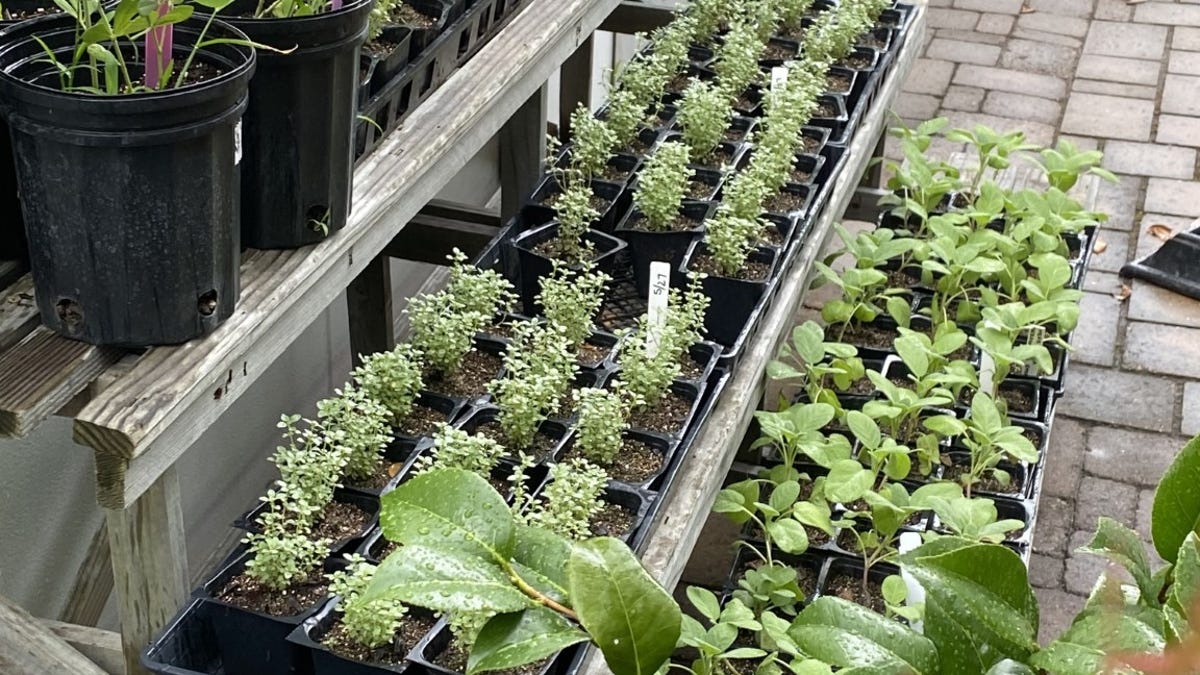By Henry Homeyer
I miss being able to go into my garden and pick flowers for the table. Yes, spring is just around the corner and it now feels present even on good days. But it will take a while for my daffodils and tulips to bloom. My winter aconite, little yellow onion blossoms, are blooming, and little white snowdrops have pushed their way through frozen earth. These mini flowers aren’t really suitable for a bouquet, but I’ve picked a few things that I like.
First I picked a few stems from my ‘Merrill’ magnolia. It’s laden with fuzzy buds for its late April bloom, and these look great in an arrangement. Magnolia branches tend to part and grow in different directions, so stems can be difficult to put in a vase. I put some in a dry vase with dried flowers and seeded stems and one in a vase with water to put on a windowsill. The buds I picked on January 31st bloomed on March 17th.
Beech branches are also good for arrangements. In any case, the young trees hold on to their light brown leaves and fill spaces in a vase. And the stems are smooth gray with cigar-shaped, pointed buds.
Of course, dogwood stems with red or yellow twigs add color to a winter arrangement. Every year you have to cut back the plants in spring or winter to keep the color of the new stems. They are fast growing plants so they can grow 5 feet of new stems in a single summer. They grow best in damp or swampy locations.
I like to have dark stems as a contrast in my vase. Trees of the cherry family (Prunus spp.) Do well there. Chokecherry, Pin Cherry, and Black Cherry look great in a vase. Young white birches have dark stems, as do hornbeams. But basically, you can choose any branches you like if you like the way they look.
Green is nice for contrasting with bare stems. I recommend white pine for lots of green. It has a nice weeping tendency and is great around the outside of the vase. Unlike the Canadian hemlock, it holds its needles in place quite well, but hemlocks are more common on my property, which is why I use them a lot.
Then there are the hydrangeas. Many species and varieties hold onto their flower panicles well into winter and can be very beautiful in a vase. My favorite is “Pink Diamond”. It has long stems and clings to the fertile and sterile inflorescences, showing a contrast between white and black flowers on the panicles. Although the flowers are pink towards the end of their flowering cycle, they are not pink after the frost.
Winter weeds can also be interesting. One of my favorites for the winter harvest is teasel. Technically, this is a biennial weed. I harvested some seeds from a corn field in Ohio years ago. The corn farmer thought I was a total nut case, because for him teasel is a harmful weed. But I’ve learned its habits and only allow half a dozen plants to bloom and produce seeds each year, and it’s a wonderful addition to winter arrangements.
The key to keeping the teasel at bay is identifying the first year plants. They are rosettes of light green leaves. I pull the most, but let half a dozen mature and bloom in the second year. The second year plants are laden with thorns and have deep roots. Then when you pull them you must wear gloves. I rub the thorns with gloves as I select them and then I can easily handle them when I arrange them in a vase.
Astillbes bloom great for me and their winter stems are great in a dry vase. I have many different types and varieties ranging from short (12-inch flower stems) to large (48-inch). Your main requirement is moist soil, and I have plenty of it. If you don’t have moist soil, the leaves will turn brown in the summer heat. One trick I’ve tried in dry places is to bury a plastic bag a foot or so deep in the ground before planting it. This works like a small bathtub and holds some water in dry times. They like half a day of sunshine and prefer the morning sun.
Snake root or black cohosh (formerly Cimicifuga spp. Now in the genus Actea) sticks to dry flowers long after summer. They look great in dry arrangements if you still have some.
Winter arrangements tend to be quite monochromatic – the most common are brown or brown colors. I’ve seen gardeners use dry allium flowers (families of onions) to add color to the table by spraying them with red, blue, purple, and yellow spray paints. I’ve never done it before, but if I think of harvesting something next spring or summer, I can do it. I even saw them sprayed in the garden!
Of course, the best colors in the house for me right now are my forced daffodils. Last autumn I potted a lot of daffodils “tete-a-tete” and kept them in my cold cellar until recently. Each bulb produced a lot of flowers and even now, after the flowers have passed, they still look pleasant with green leaves and dried yellow flowers.
Henry Homeyer is a longtime UNH master gardener, author of four gardening books. He can be reached at henry.homeyer@comcast.net or PO Box 364, Cornish Flat, New Hampshire, 03746 or at www.Gardening-Guy.com.








